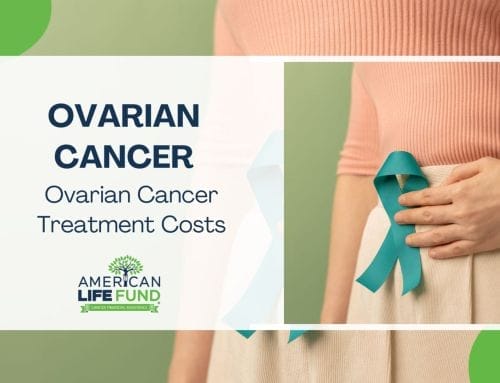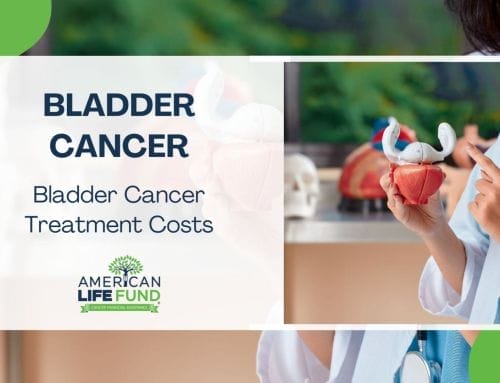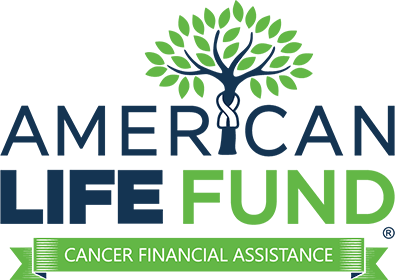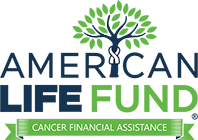Traditional cancer treatment or conventional cancer treatments, is what many people refer to as, “slash, burn, and poison”. These harsh words reference surgery, radiation, and medications which can have serious side affects.
For many people, traditional and sometimes crude treatment simply doesn’t work or is not enough; which is why it is becoming increasingly popular to turn to alternative cancer treatments which are generally safe.
To save you time and energy, we have compiled a convenient list of some of the most popular alternative cancer treatment methods.

Note: If you need help paying for cancer costs or other expenses, American Life Fund may be able to help, by purchasing your life insurance policy for a lump-sum cash payment through a viatical settlement. Find out if you qualify for viatical settlement (and how much you could get) in just a few minutes.
Our Guide To Cancer Treatment Alternatives
- Why You Should Always Talk To Your Doctor Before Considering Any Alternative Cancer Therapies Or Treatments
- Meditation, Yoga, & Mind-Body Therapies
- Diet-Based Cancer Treatments
- Essential Oil Alternative Cancer Treatments
- Vitamin D3 Cancer Treatments
- Acupuncture
- Insulin Potentiation Therapy
- Biomagnetic Therapies
- Financial Assistance Options For Cancer Patients
- Sources & Further Reading
Always Consult With Your Doctor Before Trying Any Alternative Cancer Treatments
Remember, before trying any new form of alternative cancer treatment, it is important that you first consult with your doctor or health care provider to ensure that the alternative medicine you’re hoping to try is appropriate for you, specifically.
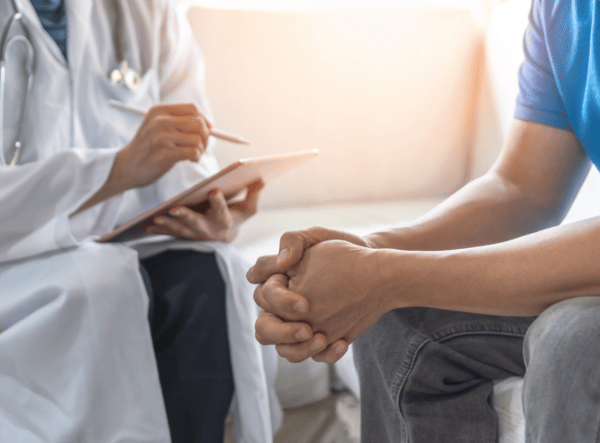
Meditation, Yoga, & Mind-Body Therapies
In addition to the traditional cancer treatments we are all familiar with, there also exists a whole host of complementary and alternative therapies, which can be used alongside those traditional methods.
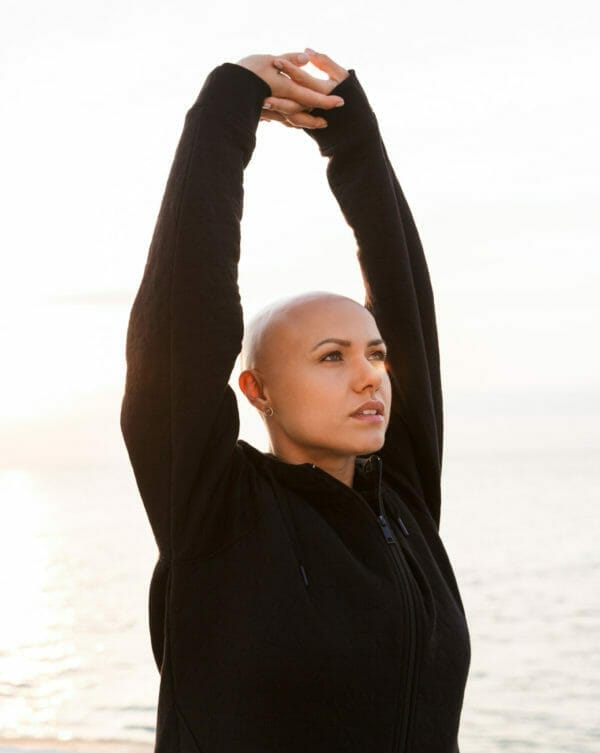
Meditation
While there are many different types of meditation practices, they’re all aimed at achieving the same goal: inducing relaxation and reducing stress.
Studies have shown that meditation can be a great option for alternative cancer treatment. This is because meditation has been proven to lower blood pressure and relieve symptoms of physical pain. It has also been shown to regulate mood, by helping people who are struggling with symptoms of anxiety and depression.
If you’re thinking of incorporating meditation as an alternative therapy cancer treatment, it’s relatively simple to get started. Simply find a quiet and relaxing place, free from distractions.
Next, you’ll want to find a position that your body feels comfortable in, and isn’t overly straining.
Then, depending on the type of meditation you’re practicing, you’ll want to focus on something specific–this could be a mantra, a word, an object or image, or simply your breathing.
From here, you will ease yourself into a relaxed and open state that allows for thoughts, feelings, and energy to flow through you freely.
If you’d like to figure out what type of meditation is right for you, there are plenty of wonderful, guided meditations available for free on YoutTube and through Google.
Biofeedback
Biofeedback is a form of therapy that is aimed at helping patients learn how to better regulate their physiological responses to stress, in order to reduce it.
The way it works is like this: the biofeedback therapist begins by using small electrodes placed on the skin, to monitor the patient’s blood pressure, heart rate, and tension rate.
This information is processed by a special kind of machine that is able to “translate” it into information about your body’s functions.
Your therapist is then able to use this information about your body to help you personalize custom relaxation techniques that are specifically for you.
Because it helps you learn how to relax in the ways most appropriate for you, biofeedback is a wonderful option for patients seeking alternative therapies.
Hypnosis
For many of us, hypnosis conjures up images of an act we may see given at a show for the purpose of entertainment. But the truth is, hypnosis is actually far more complex than we give it credit for.
Hypnosis functions as a form of therapy, whereby the hypnotherapist is able to help the patient into a relaxed and suggestible state of mind, in order to make them more open to the power of suggestion.
Once in this state, the hypnotherapist is able to offer positive suggestions regarding the patient’s cancer treatment.
Studies have shown hypnosis to be an effective alternative cancer treatment. For example, it has been shown to reduce stress and pain, reduce the effects of harsh treatments such as chemotherapy and radiation, and even lead to better post-surgical responses and faster healing times in patients.
Yoga
Ah yoga, one of those things with so many benefits.
When utilized by cancer patients, yoga has been shown to: reduce fatigue, lower stress (up to 65% in some cases), improve physical function, lead to better sleep, and even reduce a patient’s risk of cancer recurrence.
If you’re interested in giving yoga a go, many cancer centers and wellness centers offer yoga classes.
Tai Chi
Unlike the forms of “still” meditation that many of us are familiar with, Tai Chi is what’s known as a “moving” meditation.
In Tai Chi, participants are guided in a series of subtle, natural, and slow movements that are meant to mimic the natural movements of the body. Individuals are encouraged to focus on breathing deeply and properly, while maintaining appropriate posture.
The whole process is aimed at inducing relaxation, while also promoting physical strength. Tai Chi actually betters the immune system over time, and leads to less physical pain, stress and anxiety overall.
Imagery
You may have heard of the “power of positive thinking”–which is essentially a very simple way of thinking about Imagery, also known as Guided Imagery or Visualization.
This is a popular mind-body practice whereby you use the power of mental visualization to recreate images in your mind, which can lead to healing over time.
With Imagery therapy, your practitioner will guide you through certain visualization exercises, with the intent of relieving symptoms associated with treatment of cancer and diagnosis.
Like many of the other forms of alternative cancer treatments we’ve already discussed, guided Imagery therapy has been shown to lead to decreased levels of: pain, fatigue, anxiety, stress, depression, and nausea associated with chemotherapy, in patients facing cancer.
Creative Outlets
Creative outlets are one of those things that everyone can benefit from, especially cancer patients!
Art therapy is basically exactly what it sounds like: creating art with the intention of promoting creativity and healing. The calm and peacefulness that this relaxing creative outlet provides has been shown to benefit cancer patients positively.
One study demonstrated that patients who took up art therapy while undergoing radiation showed improved health, both physically and psychologically, leading to an increase in overall quality of life. Studies have also shown that art therapy as an alternative cancer treatment, leads to more positive emotional states.
Massage
Science says that massage improves overall quality of life, especially for cancer patients. This is because of the numerous physical and psychological benefits it offers, including: pain reduction, decreased physical tension, increased relaxation, and increased circulation. Basically, massage is an important part of the healing process.
Because the needs of patients facing cancer can differ, it’s best to look for a qualified practitioner who has a history of offering oncology massage specifically.
Reiki
Reiki is a therapeutic energy healing practice which originated in Japan.
Unlike a traditional “hands-on” massage, a Reiki practitioner simply holds their hands just above your body, or may very lightly touch you, with the intention of transmitting “life force energy” to the patient.
Many cancer patients have reported positive feedback after undergoing reiki, and studies have shown that it can lead to less physical pain and increased levels of relaxation.
If you’re interested in trying reiki as an alternative cancer treatment, be sure to find a qualified reiki practitioner to lead the session.
Diet-Based Cancer Treatments
A healthy lifestyle starts with healthy habits–and one of the healthiest habits you can implement for yourself is that of healthy eating.
Not all food is healthy, which is why many people believe that unhealthy foods and drinks can actually lead to cancer, and even prevent people’s bodies from healing from it once they’re diagnosed. In an effort to heal themselves, some people try diet-based cancer treatments.
Diet-based cancer treatments focus on probiotic foods, immune-boosting supplements, and organic vegetables. Some diet-based cancer alternative treatments include: the Gerson Diet, The Budwig Protocol, Proteolytic Enzyme Therapy, and Vitamin C Chelation.
Additionally, there are certain other ways of implementing diet-based alternative cancer treatments, which we will address in the following paragraphs.

Intermittent Fasting Therapies
While we could certainly talk all day long about diets that center on what to eat, there is also a popular method of “dieting” which centers not on what to eat, but when to eat it.
Intermittent fasting is the process of designating certain time periods for eating and others for fasting without consuming any food. One of the most popular schedules for intermittent fasting is known as the 8/16, where you consume all of your daily meals during an 8 hour period, followed by allowing your body to fast for the remaining 16 hours of the day.
Here’s how it works: If you have your first meal of the day at 9am, for example, you can continue to enjoy meal times, as needed, for the next 8 hours (until 5pm). After 5pm is what’s considered the fasting period, which will extend another 16 hours, until you eat again the following day at 9am.
While intermittent fasting can certainly help with weight loss, that’s not all it can do. Intermittent fasting is an especially popular alternative cancer treatment, because studies have demonstrated that it can actually decrease the rate at which cancer grows.
Turmeric And Curcumin Therapies
If you love Indian curry, or even those new and wildly popular Turmeric lattes everyone seems to be drinking these days, then you’re in luck.
There is some evidence to suggest that both Turmeric and curcumin have the power to fight cancer cells and stop them from spreading. (To clarify, Turmeric is the spice that gives Indian curries their iconic color, and curcumin is a substance found in turmeric).
This alternative to conventional treatments seems to work most effectively with breast, bowel, stomach, and skin cancers. For example, one study indicated that curcumin was able to stabilize colorectal cancer that was resistant to other treatments. Beyond that, these treatments can help with pain and inflammation.
While you can, and should, absolutely consume turmeric and curcumin while eating, perhaps the best way to harness the power of these substances is by making daily supplements a part of your routine.
Mushroom Therapies
Did you know that there are over 600 types of edible mushroom species?!
Uniquely, mushrooms are one of those substances that have been used to heal people for thousands of years. They are known to strengthen your immune system, and many patients believe that mushrooms help to cure cancer.
You can choose to ingest whole mushrooms, mushroom compounds, or supplements made from mushrooms. The method of ingestion is up to you!
Essential Oil Alternative Cancer Treatments
There are a few essential oils that people identify as being especially powerful when it comes to alternative cancer treatment.
One of those essential oils is frankincense. This particular essential oil has been used to treat a variety of ailments since ancient times.
Presently, Frankincense has actually been used for brain cancer, breast cancer, colon cancer, pancreatic cancer, prostate cancer, and stomach cancer. For example, in one study, scientists found that breast cancer cells stopped growing when they were exposed to frankincense oil. In another study, they found that it helped to suppress cells associated with bladder cancer.
Additionally, Mistletoe essential oil extracts (also known as Iscador), have actually been one of the most popular alternative cancer treatments in Switzerland, Germany, and other parts of Europe for decades.
With this treatment, you don’t apply the oil topically–but rather, you get injections of it. The injections actively stimulate your immune system and encourage it to start attacking the unwanted cancer cells. Pretty cool, right?
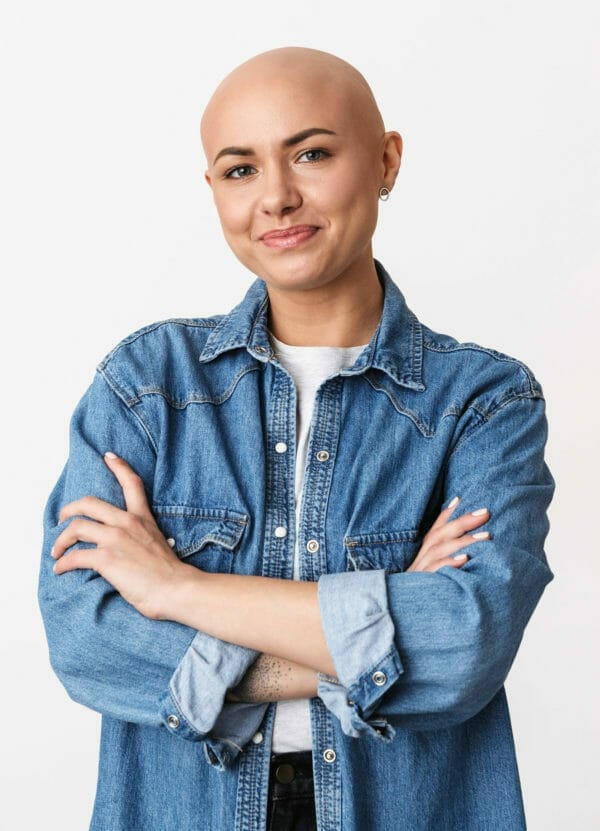
Vitamin D3 Cancer Treatments
We have been hearing for years about how too much sun can unfortunately lead to skin cancer– but the sun isn’t all bad. In fact, the Vitamin D3 that it produces also works as an alternative cancer treatment.
Doctors will surely tell you that getting enough Vitamin D3 is crucial to ensuring that your immune system is functioning at its peak. This is why many people take a daily Vitamin D3 supplement. And when it comes to cancer, some people take these vitamins proactively, while others use Vitamin D3 as part of their alternative treatment routine.
Here’s a tip: to ensure your Vitamin D3 supplement is absorbing as best it can in your body, be sure to eat some healthy fats like coconut oil.
Acupuncture
Acupuncture is an ancient Chinese healing technique that involves placing very tiny needles into key pressure points on the body.
The mainstream medical community actively embraces acupuncture as a treatment for a host of various illnesses, including cancer, fertility issues, headaches, and even osteoporosis. Also, studies show that acupuncture can provide pain relief during traditional and alternative cancer treatments.
Insulin Potentiation Therapy
While many of us may be unfamiliar with Insulin Potentiation Therapy (IPT), it is used alongside very low-dose chemotherapy by some patients as an alternative cancer treatment.
Here’s how it works: IPT helps small chemotherapy doses to target cancer cells more effectively. Typically, you start by fasting. This helps to push your healthy cells into a state of mild hypoglycemia or “hunger”. Then, when you start the chemotherapy (the dose is only a 10th of the usual amount), the “hungry” cells attract the radiation toward them. This allows you to take advantage of a traditional cancer treatment, but ensures that less radiation enters your body!
Biomagnetic Therapies
What if I told you that there is an alternative cancer treatment that involves–and stay with me now– magnets.
You may hear this cancer treatment referred to as biomagnetism, biomagnetic pairs, or terrain restoration therapy. This type of therapy uses magnets, which are placed on strategic parts of your body, (much in the same way as acupuncture needles). In particular, they are placed over the areas where you have cancer, and they work to restore the natural pH balance of your body.
The belief behind this treatment is that cancer cells work with viruses, fungi, and bacteria in the body, which creates an environment that allows the cancer to thrive. The magnets disrupt this process—creating a healthier environment that is no longer an ideal space for the cancer to thrive.
Financial Assistance For Cancer Patients
A cancer diagnosis is never easy, especially when that diagnosis turns into a financial burden. Many patients have questions about how to pay for cancer including financial assistance, insurance policies, and other monetary concerns as medical bills pile up. In order to avoid financial distress, it is important to understand the costs associated with treating cancer. Some of your largest expenses are likely to come from the following: doctor visits, treatment, medications, and transportation/travel.
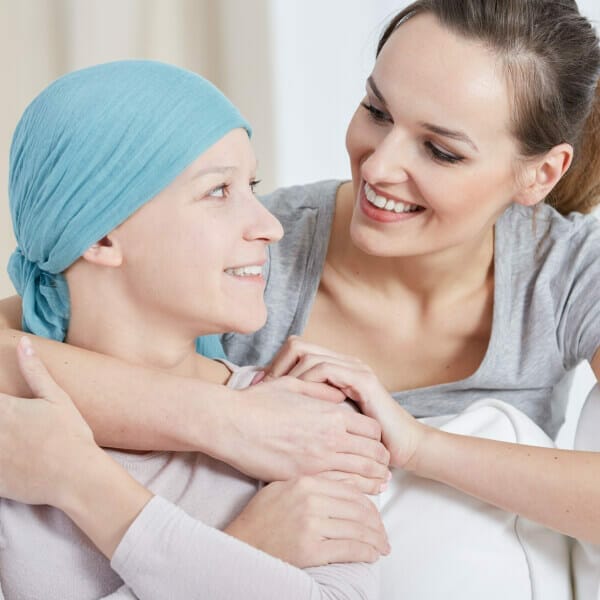
The good news is, help is always available–and you deserve it, no matter what your financial situation is. To learn more about how we help cancer patients financially, contact us at American Life Fund!
And in the meantime, take a look at some of our articles on how to find financial assistance and free money for cancer patients:
- Financial Assistance & Free Money For Cancer Patients
- 30+ Organizations & Charities That Help Cancer Patients Financially.
- Financial Assistance for Pancreatic Cancer Patients
- Financial Assistance for Prostate Cancer Patients
- Financial Assistance for Colon Cancer Patients
- Financial Assistance for Esophageal Cancer Patients
- Financial Assistance for Bile Duct Cancer Patients
- Pancreatic Cancer Treatment Costs
Sources & Further Reading
- Take a Moment With Meditation
- What Is Biofeedback Therapy? How Does It Fit Into Cancer Treatment?
- Hypnosis and Its Use in Cancer Treatment
- Yoga for Cancer Patients: 5 Benefits, 4 Poses
- Tai chi: Healing from the inside out
- Guided Imagery
- HOW ART THERAPY BENEFITS CANCER PATIENTS
- The benefits of oncology massage
- Reiki: A Light Touch that Helps Cancer Patients
- The Benefits of Reiki Therapy During Cancer Treatment
- Fasting and Cancer
- Turmeric (Curcumin)
- Can Frankincense Treat Cancer?

